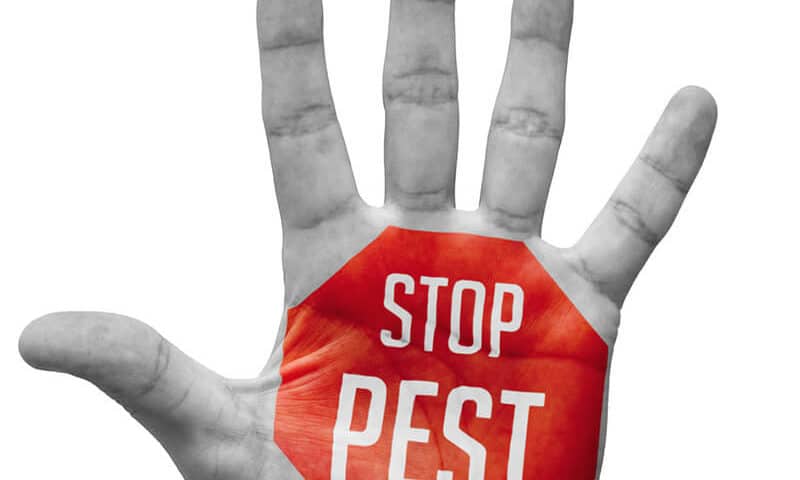Unknown Facts About Pestwise
Unknown Facts About Pestwise
Blog Article
The Single Strategy To Use For Pestwise
Table of ContentsThe Ultimate Guide To PestwiseGetting The Pestwise To WorkSome Known Questions About Pestwise.Not known Facts About PestwiseMore About PestwiseSee This Report on Pestwise5 Easy Facts About Pestwise Explained

Q. Specify "integrated insect administration" (IPM) and listing a number of possible control techniques that might be utilized in an IPM strategy. A. Integrated insect administration is the combining of proper insect control methods right into a single plan to decrease bugs and their damages to an acceptable degree. Insect control tactics may include: host resistance, biological control, social control, mechanical control, hygiene, and chemical (pesticide) control.
Everything about Pestwise
What can you do to maintain the insects you are attempting to manage from coming to be resistant to the chemicals you utilize? A. Parasite resistance can be decreased by utilizing incorporated insect monitoring and turning the sorts of chemicals used.
Parasites are an essential risk to the farming business, and incorporated insect management helps growers address and reduce these threats. Integrated bug management makes use of a number of techniques in facility, thus being an extra effective option to the issue. Commercial Pest Control. In particular, eliminating hostile chemical techniques permits for minimizing damage to individuals and the atmosphere by utilizing natural and much safer choices instead
6 Easy Facts About Pestwise Described
The objective of integrated parasite administration is to lessen this injury and control acceptable infestation degrees rather than get rid of all undesirable populations. This is why it is important to comprehend what procedures are warranted in each situation and usage aggressive ones only when various other incorporated administration techniques do not work. Integrated management mitigates the adverse effects of a non-IPM strategy, and the primary advantages of IPM Benefits of IPM.
A correct understanding of the invasion range figures out if the issue ought to be dealt with. are the next components of an IPM program since it is crucial to understand if the microorganisms make possible dangers and pick the incorporated management choices or the specific pesticide usage. intend to minimize problems by applying various agronomic methods.
Pestwise - Truths
Integrated administration choices in an IPM program begin with much safer to a lot more hostile ones. The above-mentioned integrated administration aspects assist recognize how to intend and apply an IPM program action by action: Screen your crops on a regular basis.

Among others, IPM cultural approaches include the adhering to field monitoring methods: dirt treatment; option of appropriate plants; plant rotation; interplanting or strip chopping; option of planting days; weed control; usage of trap plants. Favorable soil problems speed up plant growth, and energetic plants are a lot more immune to invasions. Healthy and balanced plants and seeds determine successful plant development, so it is crucial to choose pest-free growing material with solid roots.
Thus, to name a few applications, crop rotation can be effectively used as an integrated pest monitoring method. Pests spread slower if rows of various crop kinds separate their host plants in intercropping or strip chopping, which is also utilized in the integrated pest monitoring system. Conversely, invasions increase when plants of the exact same crop type or family members expand together.
Similarly, potato beetles can harm expanding potatoes, in addition to tomatoes. Growing trap plants in patches is another alternative for IPM intercropping. This integrated parasite monitoring technique suggests bring in insects to particular plants and after that managing them with chemical or mechanical techniques. Particularly, you can expand soybeans as catch plants for Japanese beetles.
Pestwise Fundamentals Explained
Barriers are normal instances of physical IPM websites techniques. Mature bugs or their eggs and larvae are accumulated by hand and damaged.

Department of Plant Sciences. College of Missouri. Soil solarization is a reliable incorporated administration strategy to disinfect the field by heating it in an all-natural way. This incorporated monitoring method suggests an usual means of destroying bugs by killers, parasitoids, pathogens, and other organic control representatives (aka hostile microorganisms). The function of organic control in IPM is to.
The Pestwise Statements
With time, their populace ended up being a genuine nuisance to farmers together with indigenous kangaroos or dingoes. The walking stick toad is one more situation highlighting integrated biological control failure hereof when it declined to hunt the target types and ended up being an insect itself. Parasitoids establish on or within their hosts to at some point kill them after developing.
Report this page